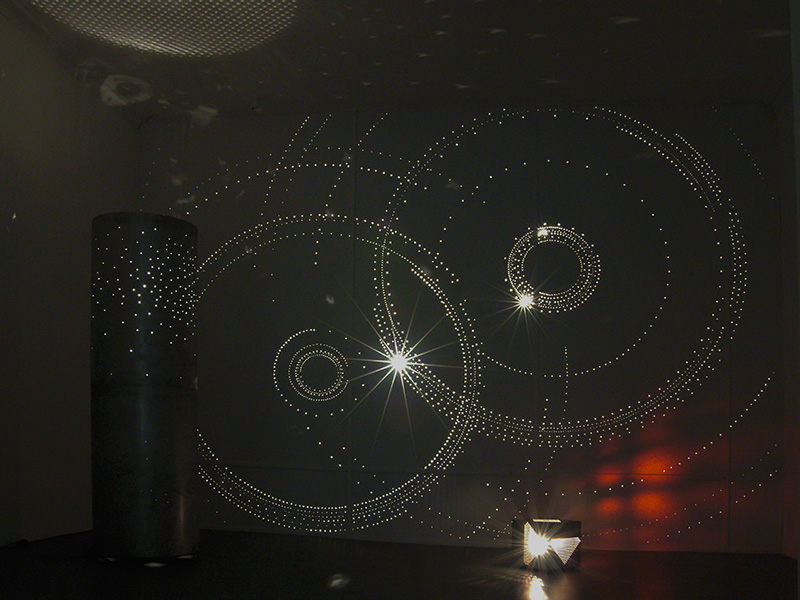ART CITIES:Berlin-Otto Piene
 Otto Piene was, together with Heinz Mack and Günther Uecker, one of the founders of the ZERO group. Piene was known for his letter reliefs and perforated grid-light boxes as well as his grid pictures – monochrome vibration structures, that offered resistance to light. At the end of the ‘50s Piene developed the first of his smoke drawings and his mechanised light sculptures.
Otto Piene was, together with Heinz Mack and Günther Uecker, one of the founders of the ZERO group. Piene was known for his letter reliefs and perforated grid-light boxes as well as his grid pictures – monochrome vibration structures, that offered resistance to light. At the end of the ‘50s Piene developed the first of his smoke drawings and his mechanised light sculptures.
By Dimitris Lempesis
Photo: Sprüth Magers Gallery Archive
In 1957 Otto Piene created the “Grid Picture”, a type of stencilled painting made from half-tone screens with regularly arranged points in single color. Piene’s work then developed in a variety of forms. The “Lichtballette” (from 1959) were a development of the “Grid Picture”: light from moving torches was projected through grids, thus extending and stimulating the viewer’s perception of space. This rudimentary apparatus soon developed into more complex means in 1960-61, employing metal screens, discs, motors, timers, and rotating electric lights, coming to room size installations. A selection of these elements is on presentation at the exhibition “Light Ballet” at Sprüth Magers Gallery in Berlin. “Light Ballet” exhibited for the first time at a New York gallery in 1965, a room full of aluminum spheres, bulb-studded globes and brass columns, illuminated in sequence, glowed and dimmed in an endless program, enveloping viewers in a pattern of oscilloscopic blips and racing shadows. Otto Piene consecutively developed three forms of “Light ballet”: “Archaic light ballet” (1959) based on torches and perforated cardboard, “Mechanical light ballet” (1960) requiring the visitors to operate cranks to set light objects slowly moving and “Automatic light ballet” with electrically powered dynamos. Otto Piene used the term “Painting with light”, distancing himself from a recent history of gestural painting in the ‘50s to a more technologically optimistic utilisation of light, in relation to recent experience. The light spectacles with which Piene was familiar were in the context of war and his experience as an anti-aircraft assistant aged sixteen, the blazes of fire and the searchlights that populated the night sky in the hunt for the Allies’ bombers. In an interview Otto Piene he recalled, he found the tracers and searchlights that striped and dotted Germany’s night skies “Hectically beautiful”.
Info: Sprüth Magers, Oranienburger Straße 18, Berlin, Duration: 29/4-17/6/17, Days & Hours: Tue-Sat 11:00-18:00, www.spruethmagers.com
